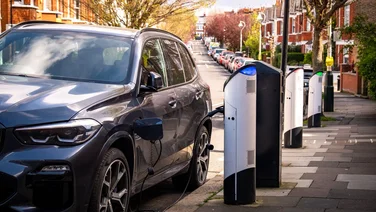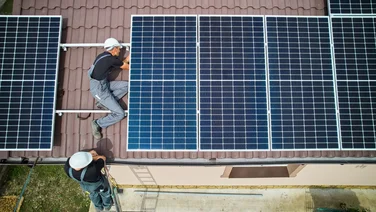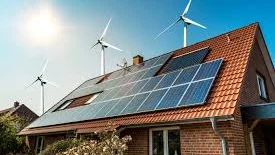Youve likely heard about the new energy price cap, which has been raised by £693 the highest level ever in British history.
The price cap will be averaged at £1,971 as of April 1st, up from the current average of £1,277.
Even if youve heard about the price cap, understanding exactly what it is and the reasons behind the raise can seem difficult.
To help you get a better idea of what the new price cap is, what it means for the country, and more importantly what it means for you, were explaining everything in this guide.
Were also diving into what you can do to make the transition easier, and how you can prepare for the next price cap raise in October.

What is the new energy price cap?
In February 2022, the national energy regulator Ofgem announced an increase to the energy price cap, raising it by £693 (effective as of April 1st). This is a 54% increase over the previous cap, which will have the obvious effect of making everyones bills a good deal more expensive.
The previous price cap average was £1,277 its now an eye-watering £1,971, which will almost certainly push many more UK households into fuel poverty. In fact, an estimated 2.2 million households are expected to join the 3.2 million households already having to choose between heating their home or buying food.
How does the energy price cap work?
A common misconception about the price cap is that it represents the maximum a household can be charged for their energy usage.
In fact, its a cap on how much suppliers can charge per kilowatt hour (kWh). The price cap per kWh is what suppliers will charge per unit of either gas or electricity to a customer paying by direct debit. As of April 1st, this will be 28p per kWh for electricity customers, and 7p per kWh for gas customers.
The new cap of £1,971 is based on a households typical energy consumption on a dual electricity and gas bill, paid by direct debit. Basically, it means if you use the same amount of energy you currently use after the price cap rises on April 1st, it will cost you more.
The new price cap only applies to people on variable tariffs those on fixed-rate tariffs will not be affected (unless they switch to a new fixed deal).
For poorer households, its very likely that the increase in payments will be higher, as the increase of £693 is just an increase on the average amount paid on energy bills.
Why has the price cap increased?
Right now, the worlds gas supply chains are experiencing a lot of turbulence, and the reasons why are a little complicated to say the least.
In the simplest terms, gas prices have been hit hard by the ongoing tensions between Russia and Ukraine, and gas supplies have been heavily depleted following a surge in demand from countries exiting lockdowns (which further affects the price).
This has created a knock-on effect where the more fear grows about gas supply, the more prices start to climb. In January 2021, the gas price per therm was roughly 50p by December 2021, this had skyrocketed to a record 450p per therm.
How the price increase might affect you
The price cap rise will affect almost every single person in the UK. A lot of people are going to see their bills go up and the cost of living become substantially higher.
However, people who were already on a fixed tariff before the price rise can breathe a sigh of relief their bills will not increase, because that is what was agreed in those contracts.
Should you switch to a fixed tariff?
For those thinking about switching to a fixed tariff in light of the Ofgem announcement, the picture isnt quite as rosy. Right now, there is not a single fixed tariff on the market that is cheaper than the current cap (£1,277). In fact, the cheapest fixed tariff is 68% more expensive than the current cap, clocking in at £2,145.
This means that all available fixed tariffs are actually more expensive than what the cap will be as of April 1st.
In order to make switching to a fixed tariff worth it, you need to consider the upcoming price cap increase in October. If we expect the October rise to be around 20% more than the April rise, you would need to find a fixed tariff that is no more than 59% higher than the current price cap of £1,277. Otherwise, it simply isnt worth it.
Alternatively, if you have the funds, investing in a set of solar panels will help you save £522 a year on energy bills. Check out: How Do Solar Panels Work?

What government support is available?
In light of the price cap rising, the UK government has set out a number of measures to try to ease the burden. Rishi Sunak, Chancellor of the Exchequer, announced the support measures shortly after the price cap increase was announced.
The new government energy loan
In the announcement, Sunak said that the UK government will support UK homes. But some have argued that the support measures, which offer £200 for most homes, don’t go far enough. Writing for The Independent, James Moore described the measures as little more than a bandaid.
One problem is that the support takes a blanket approach, meaning everyone in the UK will receive exactly the same amount. Billionaires like Richard Branson will get the same support as someone suffering from fuel poverty, which frankly doesnt make much sense.
And its not no-strings-attached cash, either youll actually have to pay back the £200 eventually. Sunak explained that the £200 will be paid back in instalments of £40, which will be added to your energy bills over the next five years.
How you receive the £200 depends on how you pay for your energy. If you pay via direct debit straight to your supplier, the money will be added as credit to the account you use for your supplier. If youre on a prepay deal, the £200 will be automatically added to your remote smart meter.
For those on older prepayment meters, you will receive a voucher either by post or email, or a special action message you can show to a retailer, who will then top up your prepayment meter.
Council tax breaks
There will also be a £150 council tax rebate for homes in tax bands A to D, which will kick in come April. Its not yet clear whether youll benefit from the tax rebate if you move from a property in the E to H bracket to a property in the A to D bracket.
This £150 will not have to be paid back. Households using heating oil will also be eligible for this discount as long as they meet the criteria of living in a band A to D home in England.
How will the new price cap affect the UK more widely?
The price cap increase will almost certainly push a further 2.2 million UK households into fuel poverty, taking the total number of UK households in this category to 6.3 million. That means a staggering 15 million people living in these homes will find themselves struggling to heat said homes after the price cap rises.
Whats worse is that the rise of £693 is just an average for those households at the poorest end of the scale, the number will likely be higher.
What is fuel poverty?
Fuel poverty is usually defined as a situation where a household spends more than 10% of their income on energy bills, after rent or mortgage. But some people define it differently, saying that a household is in fuel poverty if:
- They have fuel costs that are above the national median level
- The money they spend on fuel leaves them with an income below the official poverty line
Top tips for reducing your energy bills in 2022
2022 is going to be a challenging year for millions of people across the UK, especially since the price cap rise is beyond citizens control. To help make it a little bit easier, here are some top tips for reducing your energy bills:
- Wash clothes at a lower temperature Making the switch to washing your clothes at 30 degrees instead of 40 degrees can save energy, but not huge amounts. According to the Energy Saving Trust, washing at 30 degrees uses around 40% less energy, which translates to around £13 off your annual energy bill. Sure, it might not sound like much, but factor in some of the other saving methods below and youll notice it all starts to add up!
- Draught-proof your property Having a draughty window can lower a rooms temperature, leading you to turn up the heating to compensate. This of course uses more energy, so a draught-proofing kit can be a savvy investment. Even something as simple as taping up gaps in your window frame can help, but if you go the whole hog and properly fix any draughts, you could save up to £30 per year on your energy bill.
- Get a smart meter Having a smart meter means you can see exactly how much energy youre using. It sounds simple, but just being able to see your energy usage can have a big impact on your energy habits. Small steps such as remembering to turn off the lights or not boiling the kettle as often can make a difference.
- Invest in double glazing If you can afford it, getting double glazing for your windows will really help reduce your energy bills. For example, replacing single glazed windows in a typical semi-detached house can save up to £110 per year. Upfront costs for double glazing can be off-putting however, with each double glazed window usually costing between £150-£600.
- Buy a more efficient boiler Having a more efficient boiler is a brilliant way to save money on your energy bills, with some models capable of saving the average UK household up to £315 per year. Again, as with double glazing, the upfront cost can be daunting, but if you can get one, a new boiler will make those monthly bills a lot healthier. Why not check out our list of the best boilers?
- Turn your thermostat down Turning your thermostat down by just one degree can save the average UK household around £80 a year. After all, over half of all the money you spend on your energy bills comes from heating your home and water.
- Switch off your appliances properly Most people leave their appliances on standby, ready to use whenever theyre next needed. This is convenient, but it also uses more energy than you might expect! If you remember to turn off your appliances on standby, you could potentially save up to £55 per year.
Are other countries seeing their energy bills increase?
Energy price rises are happening across most of Europe right now, especially the countries most reliant on Russian gas. Germany already has some of the highest energy bills on the continent, as a result of heavy subsidies for renewable energy.
The German government has actually considered scrapping the surcharge on electricity bills used to fund renewable energy, as millions of households are grappling with rising energy prices.
Similar stories are popping up across other countries in Europe, with governments spending billions to ease the impact of the ongoing energy crisis. Italy announced a ¬1.7 billion package to help with energy bills, for example.
Other European countries have tried slightly different approaches for example, France committed to capping an increase on electricity costs at 4% and has instead ordered EDF, one of the worlds largest electricity producers, to sell cheap energy to rivals.
The intention here is for rival energy companies to sell electricity at a lower price, making energy bills for French citizens lower.
Summary
The price cap increase is going to make things very difficult for many UK citizens, of that there is no doubt. But its a very difficult thing to reliably control, because so many factors are causing prices to rise.
Governments both here in the UK and throughout Europe basically face two evils: raise energy prices for citizens, or shield citizens from rising costs and instead welcome huge amounts of debt.






